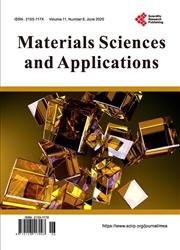Laser Polishing of Laser Powder Bed Fusion AlSi10Mg Parts—Influence of Initial Surface Roughness on Achievable Surface Quality
引用次数: 11
Abstract
Laser Powder Bed Fusion (LPBF) is an Additive Manufacturing technique, which allows production of highly complex solid metal parts with good mechanical properties, compared to conventionally manufactured parts. Nevertheless, the layer-by-layer fabrication process also offers several disadvantages, including a relatively high surface roughness depending on the shape of the component, its position and orientation during the fabrication process. This paper deals with investigations on the surface roughness reduction capability, and residual surface structures by laser polishing of LPBF AlSi10Mg parts under varying initial surface roughness in order to investigate the influence of the surface behavior and initial surface roughness to the achievable surface quality by laser polishing. Hereto test specimens with varying fabrication orientations regarding to the built platform are printed and further polished. Thereby the initial arithmetic roughness varies between 19.2 μm and 8.0 μm. It could be shown that the achievable surface roughness by laser polishing with continuous and pulsed laser radiation is increasing with rising initial roughness, but the relative roughness reduction is almost constant in the range of 95% - 97.5%. The analyzation of the residual roughness structures shows, that the main roughness differences is found in the middle and long structure wavelength regime, which are directly depending on the initial surface structures of 3D printing.激光粉末床熔化AlSi10Mg零件的激光抛光——初始表面粗糙度对可实现表面质量的影响
激光粉末床融合(LPBF)是一种增材制造技术,与传统制造的零件相比,它可以生产具有良好机械性能的高度复杂的固体金属零件。然而,逐层制造工艺也存在一些缺点,包括取决于部件的形状、其在制造工艺期间的位置和取向的相对较高的表面粗糙度。本文研究了LPBF AlSi10Mg零件在不同初始表面粗糙度下激光抛光的表面粗糙度降低能力和残余表面结构,以研究表面行为和初始表面粗糙程度对激光抛光可获得的表面质量的影响。因此,打印并进一步抛光具有与构建平台相关的不同制造方向的试样。因此,初始算术粗糙度在19.2μm和8.0μm之间变化。结果表明,用连续和脉冲激光照射激光抛光可获得的表面粗糙度随着初始粗糙度的增加而增加,但相对粗糙度的降低几乎恒定在95%-97.5%的范围内。对残余粗糙度结构的分析表明,主要的粗糙度差异是在直接取决于3D打印的初始表面结构的中长结构波长区域中发现的。
本文章由计算机程序翻译,如有差异,请以英文原文为准。
求助全文
约1分钟内获得全文
求助全文

 求助内容:
求助内容: 应助结果提醒方式:
应助结果提醒方式:


